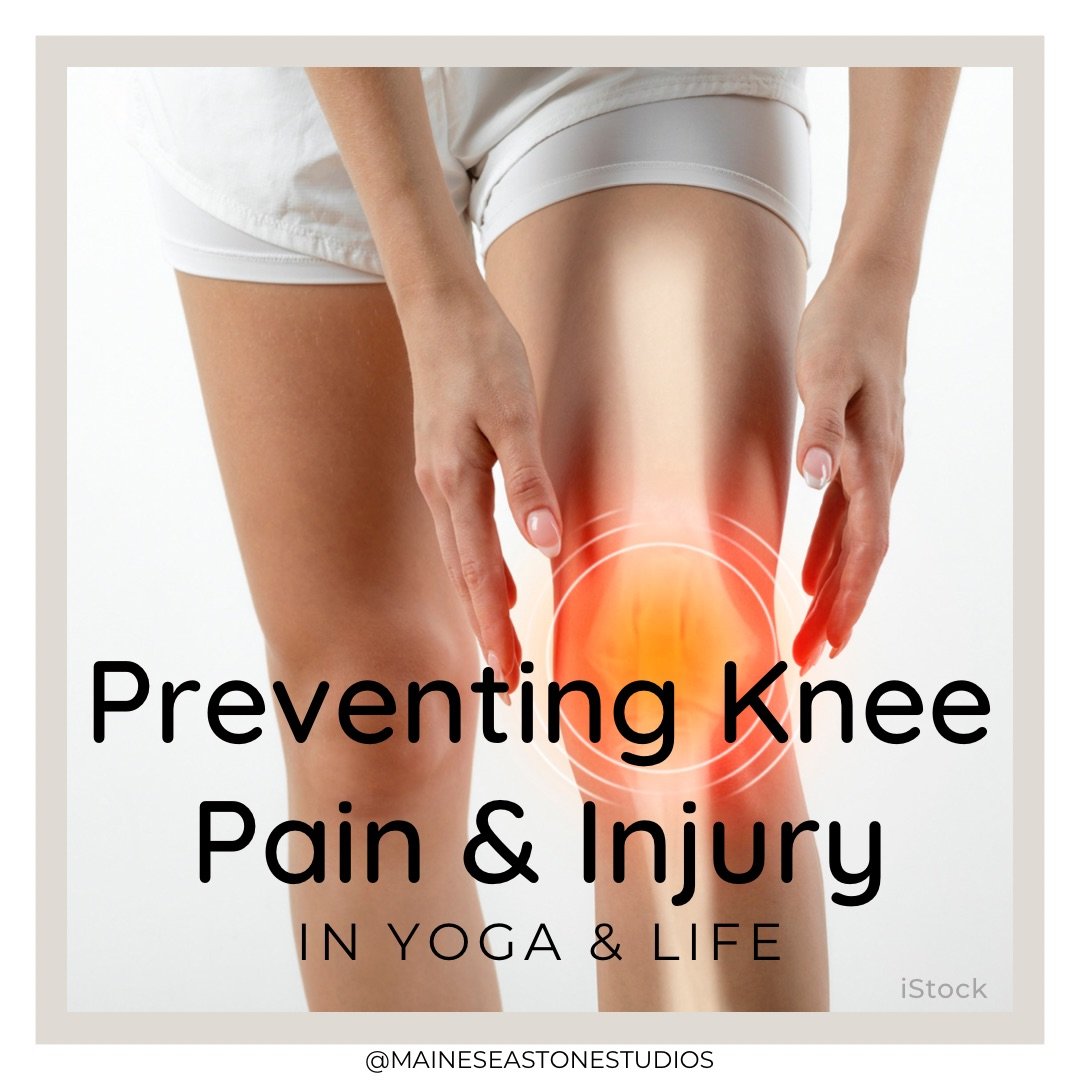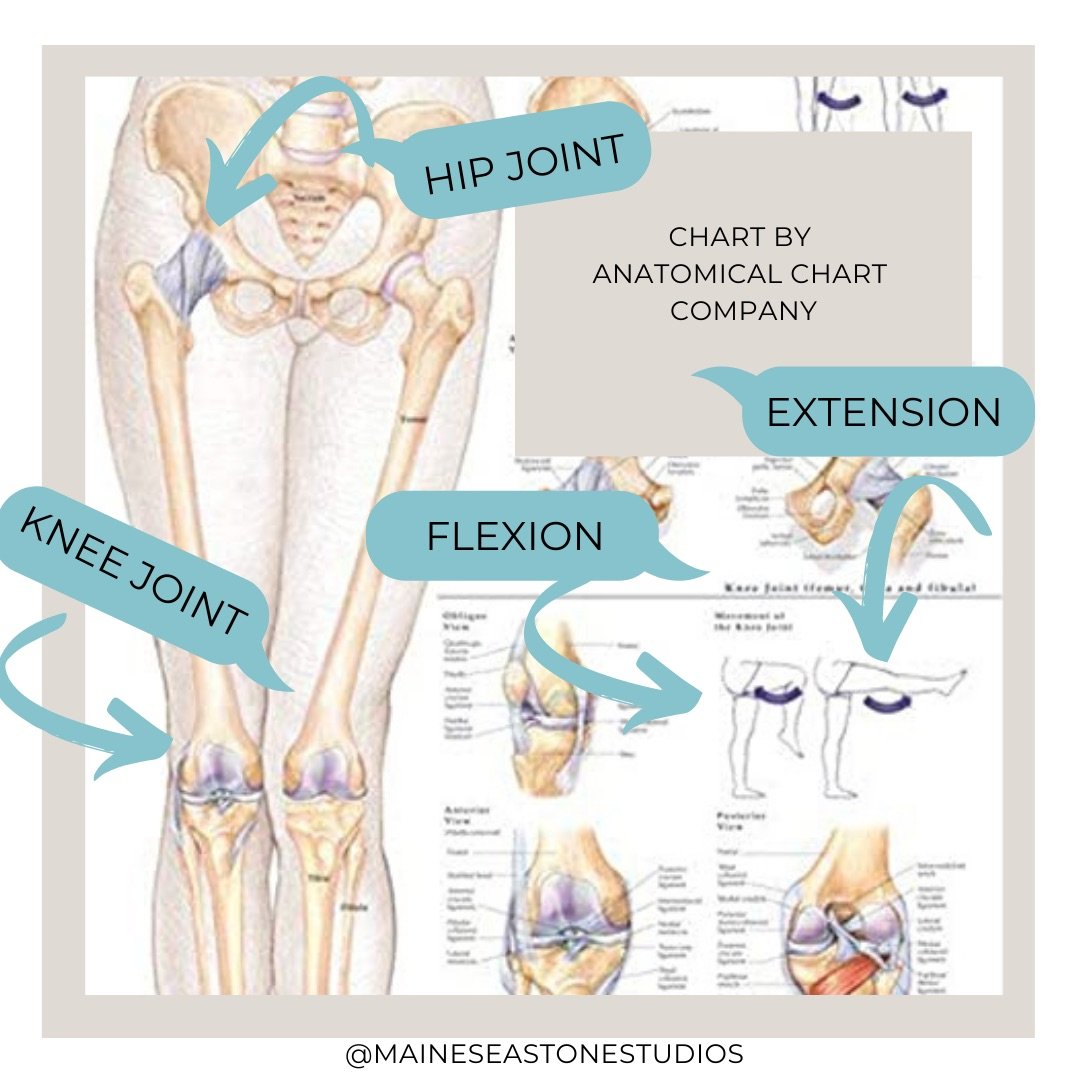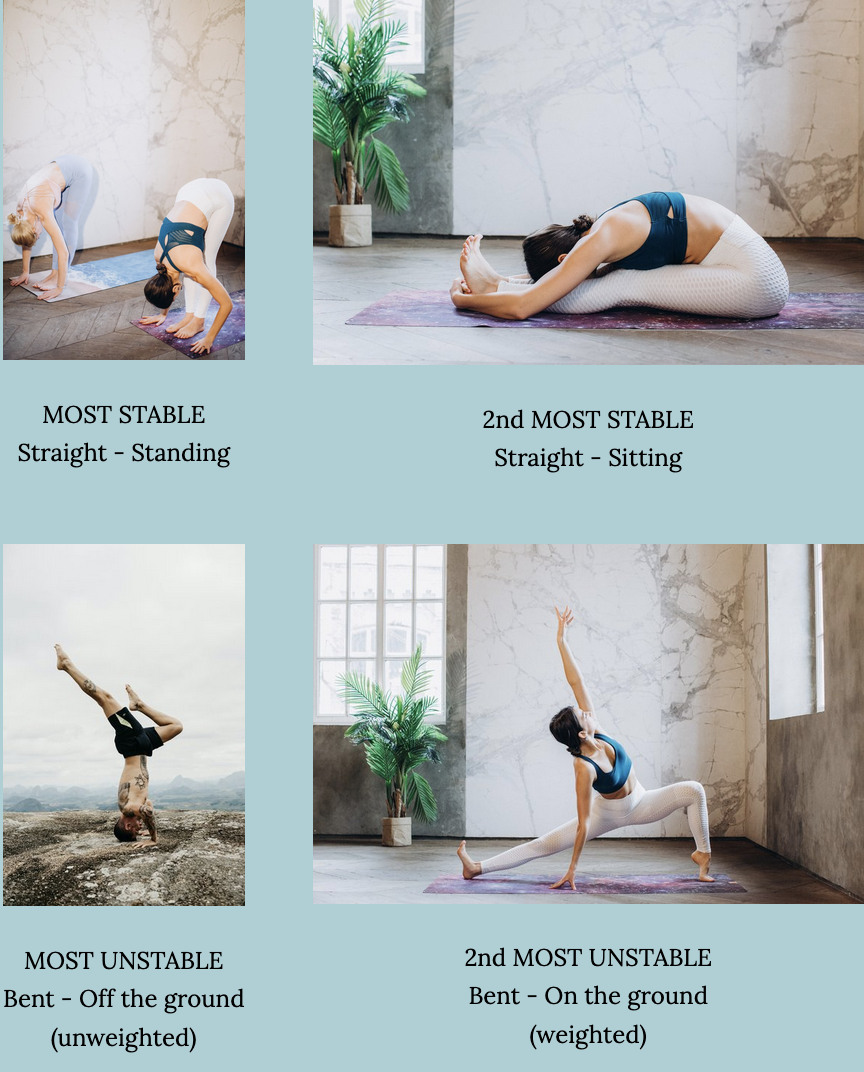How to Protect your Knees During Yoga
Did you know the knee is the largest joint in the body? It’s also one of the most easily injured! We rely on our knees for a lot and they are crucial to how well our body functions at all stages of life, but especially when we’re older.
Knees are weight-bearing joints and have to absorb considerable amounts of pressure with every step we take—usually one and a half times the weight of our bodies. We also kneel on them, crawl with them, leave them bent in sitting positions for long hours, and bend and twist them all sorts of ways for various yoga poses and everyday sitting positions.
Unlike the hip joint (a ball-and-socket joint), which is designed for stability and multi-directional movement, the knee joint (a hinge joint) is designed for mainly two directional movement (flexion and extension), with a small degree of medial and lateral rotation (side-to-side motion).
The knee is less stable than the hip joint, and takes on weight and pressure in yoga poses and as we move through life. These impacts, combined with imperfect knee alignment, can contribute to cartilage deterioration and put stress on the ligaments and tendons surrounding the knee joint.
Some of the most common knee injuries include fractures, dislocations, sprains, and ligament tears. In many cases, due to the complexity of the joint, injuries involve more than one structure of the knee. This means that while many knee injuries can be successfully treated with simple measures like bracing and rehabilitation exercises, more serious injuries may require surgery.
The medial knee (the inside) is the most vulnerable part of the joint and is the most susceptible to injury.
Anterior cruciate ligament (ACL) tears and meniscus tears are some of the most common sports injuries affecting the knee. In fact, ACL injuries account for about 40% of all sports-related injuries.
Worried about your knees?
When practiced properly, yoga has actually been proven to reduce knee pain. In one study, conducted on patients ranging in age from 35-80 years old, nearly all participants experienced improved joint pain and reduced stiffness.
So how do we protect our knees?
To protect the knees, and to make yoga poses accessible for all, poses should be modified or supported with props. Blocks, bolsters, pillows, cushions, towels, blankets, pads, chairs, the wall. Use whatever is needed to support and protect your body in the pose.
In standing poses where you’re reaching toward the floor, use blocks or a chair to bring the floor to you. In straight-legged poses like Uttanasana (Forward Fold) or Virabhadrasana III (Warrior III), this will help protect the knees from hyperextending. In strengthening poses like Anjaneyasana (Crescent Lunge), this will help support the weight of the body, taking stress off the knee joints.
You can also use blocks in hip-opening or sitting poses to support and take the pressure off the knees. Examples include Supta Baddha Konasana (Reclined Bound Angle), Sukhasana (Easy Pose), and Virasana (Hero Pose).
Pads, blankets, towels, cushions, pillows and other props can help cushion and support the knees during floor contact or other positions. Some standing poses can be modified to practice sitting, against a wall, or laying on the floor to reduce the weight bearing load, stabilize the body, and protect the knee.
It’s also important to understand how our knees are meant to move and function.
The most stable position for the knee joint is extension (a straight leg), with standing extension being more stable than sitting extension. The most mobile (or unstable) position for the knee is flexion (a bent leg), with standing flexion being more mobile than sitting flexion.
This means that your knees are the most vulnerable to injury in yoga poses or activities when they are bent.
To protect your knees during bent-knee poses or life activities, focus on alignment and stability before focusing on range of movement. This means, in poses like Utthita Parsvakonasana (Extended Side Angle Pose), where one knee is bent, you may choose not to stretch as far into the pose (your hand may not reach the floor). By maintaining the proper and safe alignment of the knee joint (instead of compromising this alignment for greater range of motion), and supporting some of the weight of the body with your arm and hand on the block you are much less likely to get hurt.
Key Takeaway:
🌟By focusing on alignment in these poses you can allow your range of motion in the pose to develop slowly over time as you build strength and stability around the knee joint in this bent-leg position.🌟
DISCLAIMER: THIS WEBSITE DOES NOT PROVIDE MEDICAL ADVICE
The information, including but not limited to, text, graphics, images and other material contained on this website are for informational purposes only. No material on this site is intended to be a substitute for professional medical advice, diagnosis or treatment. Always seek the advice of your physician or other qualified health care provider with any questions you may have regarding a medical condition or treatment and before undertaking a new health care regimen, and never disregard professional medical advice or delay in seeking it because of something you have read on this website.
SOURCE MATERIAL:
Harvard Health Publishing. Harvard Medical School. “Age-proof your knees”
John Hopkins Medicine. “Knee Injuries”
American Academy of Orthopaedic Surgeons. “Common Knee Injuries”
National Institutes of Health. US National Library of Medicine. “Effect of integrated yoga therapy on pain, morning stiffness and anxiety in osteoarthritis of the knee joint: A randomized control study”
Judith Hanson Lasater “Yoga Myths: What you Need to Learn and Unlearn for a Safe & Healthy Yoga Practice”











